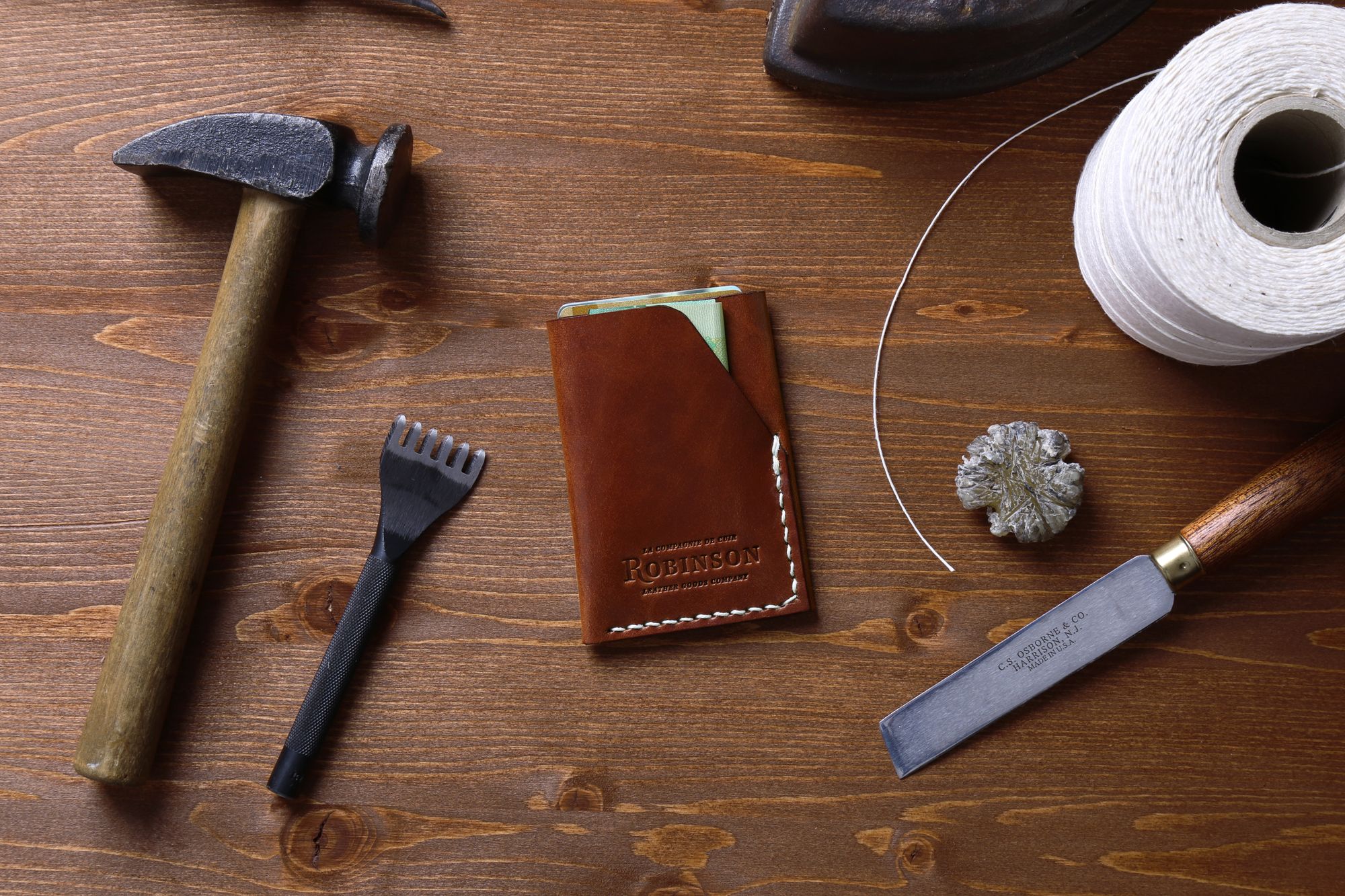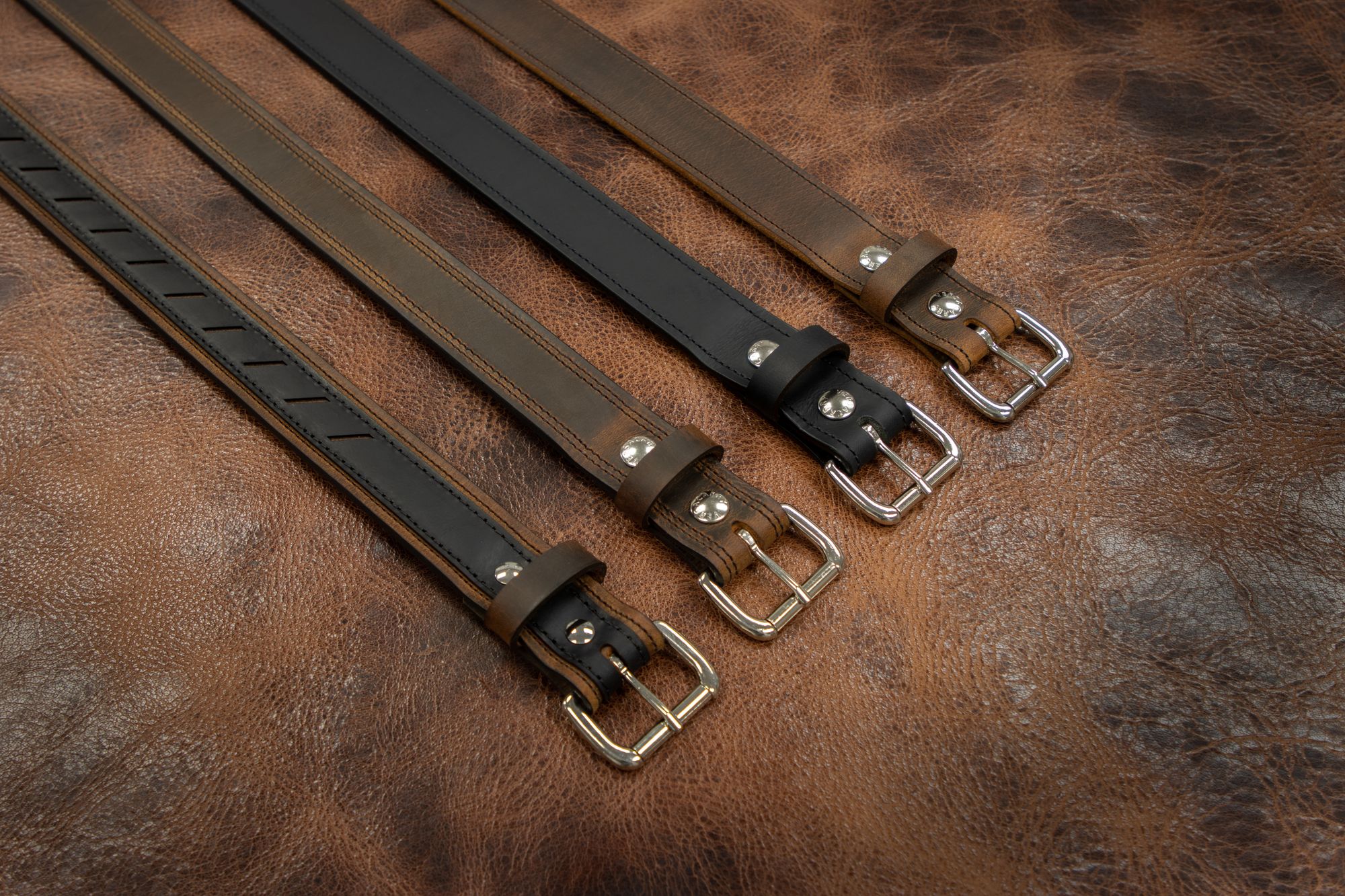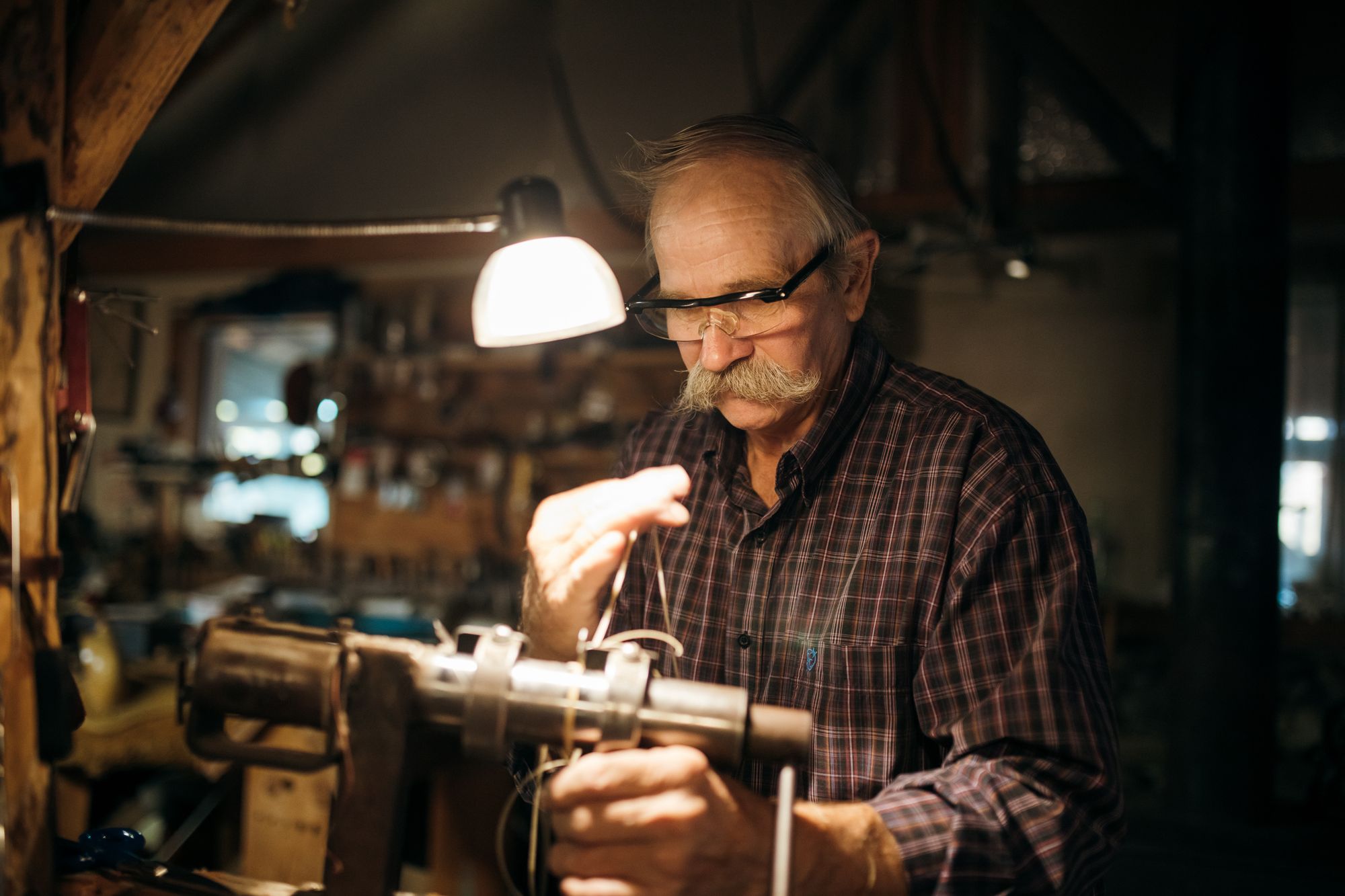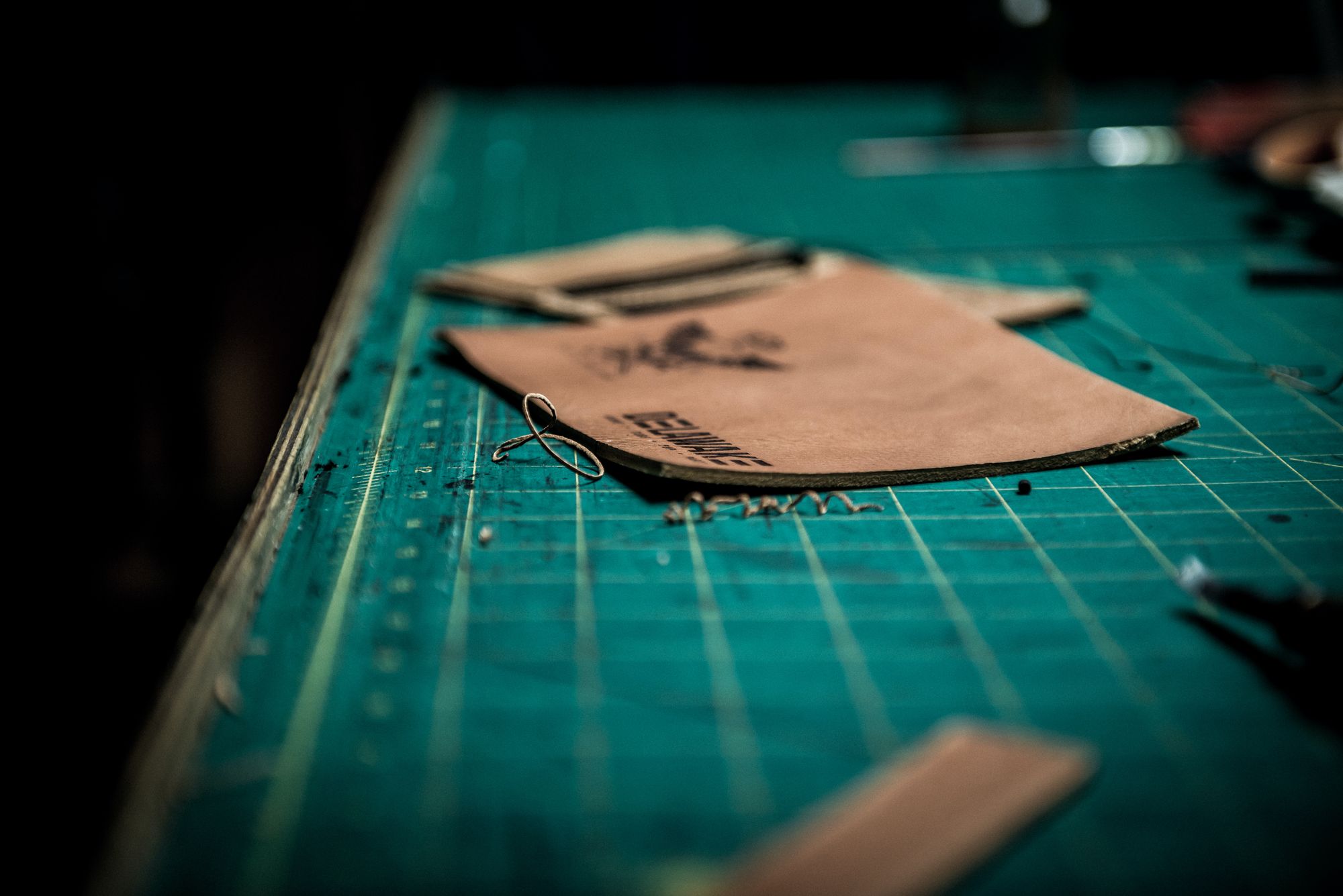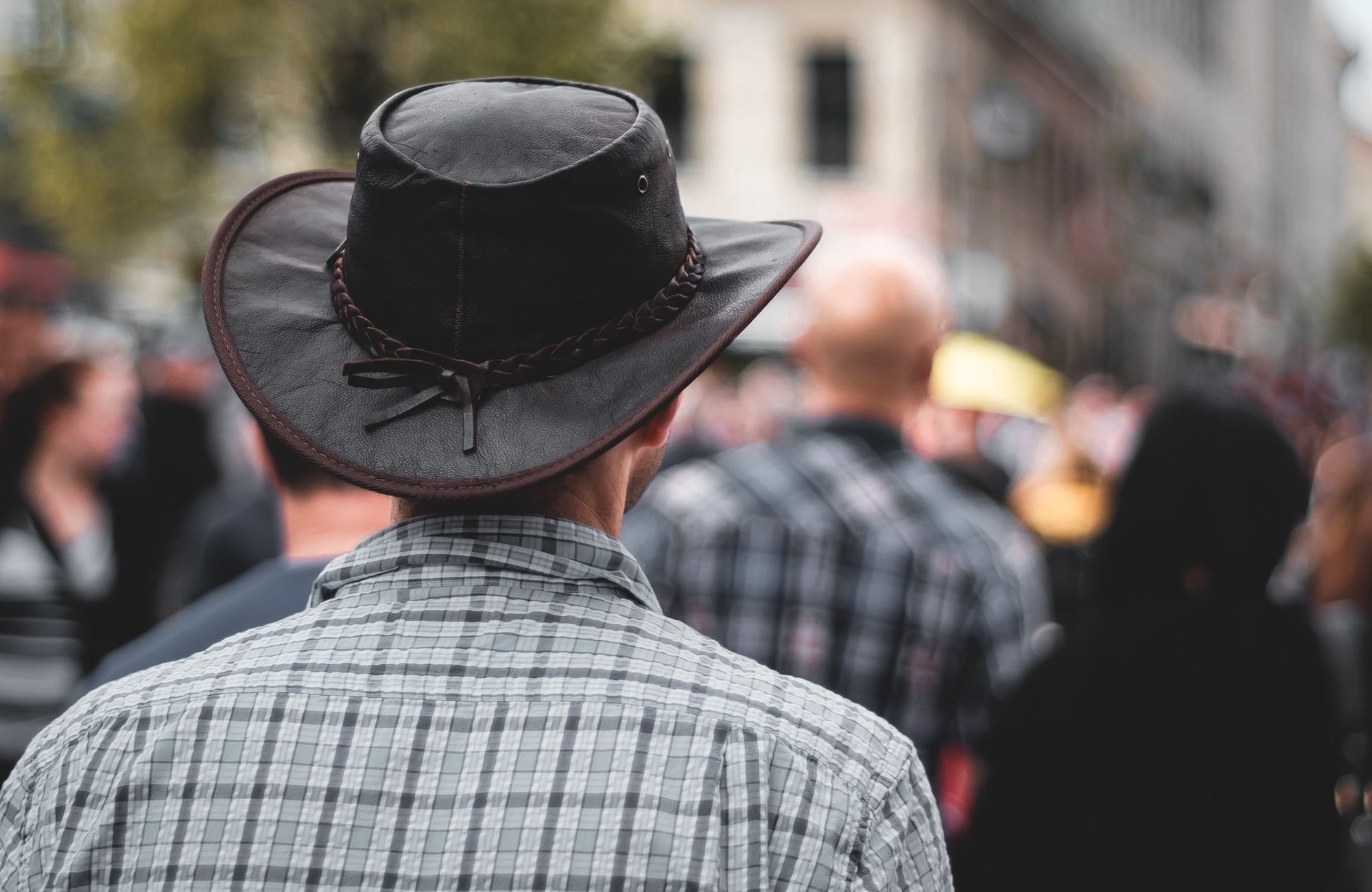Leather product design and development is a critical component of the leather manufacturing industry in the United States. With an ever-increasing demand for high-quality leather products, manufacturers are under immense pressure to produce innovative designs that meet the needs and preferences of consumers.
Leather product design and development is a complex process that involves multiple stages, including concept development, material selection, pattern making, prototyping, and testing. In the United States, the leading segments in the industry are footwear and leather goods, accounting for 54.7% and 26.7% of the industry revenue, respectively.
In recent years, the leather product design and development process has undergone significant changes due to the integration of advanced technologies and innovative design concepts. Designers and manufacturers now have access to sophisticated tools and materials that enable them to create high-quality leather products that meet customers' evolving needs.
As the leather manufacturing industry continues to grow, it is crucial for manufacturers to stay up-to-date with the latest design and development techniques to remain competitive.
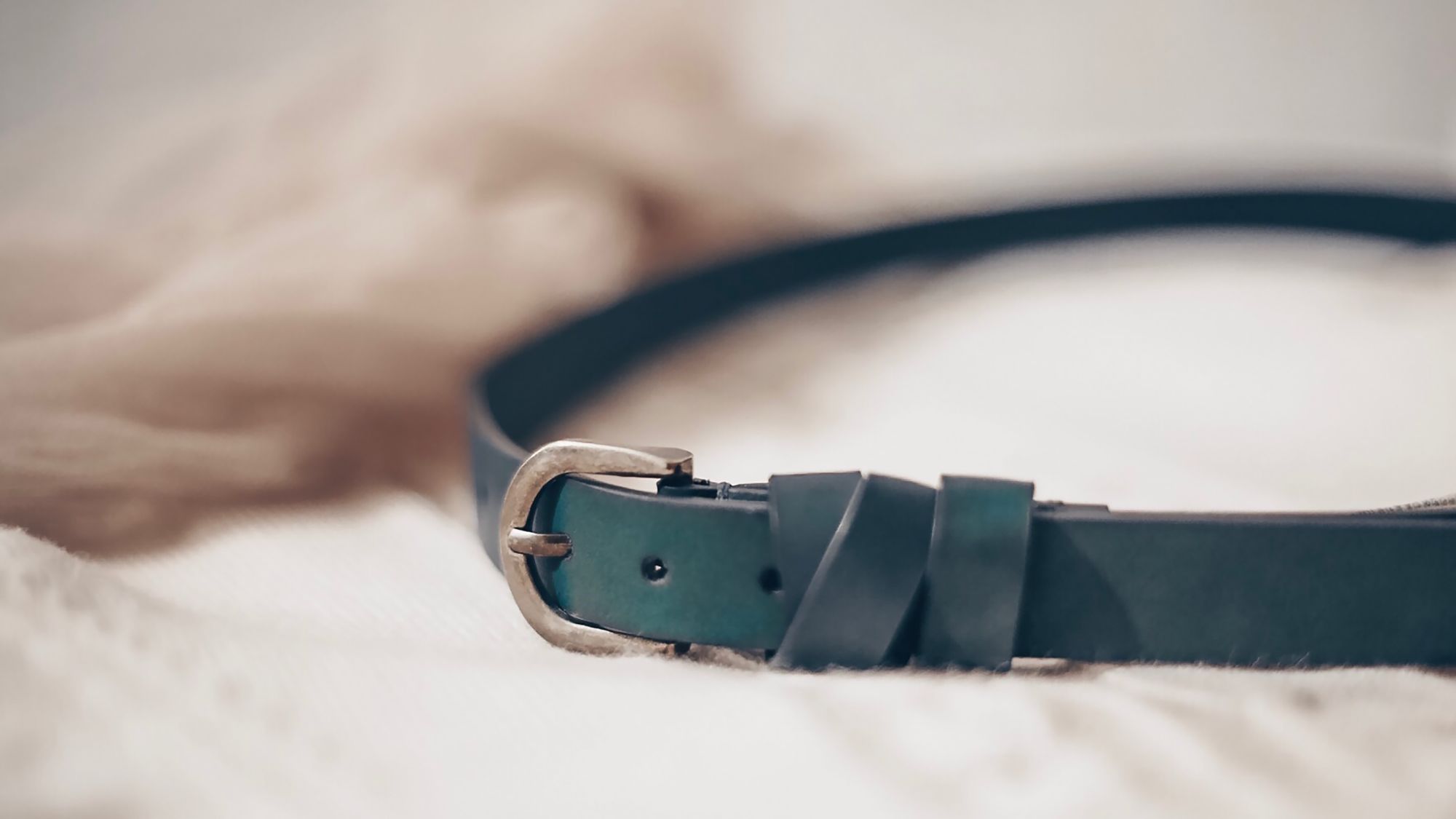
In this article, we will explore various leather product design and development techniques that are commonly used in the industry and discuss their advantages and disadvantages.
Here's what we shall cover in this post:
- Introduction to Leather Product Design and Development
- Material Selection for Leather Product Design
- Leather Stitching Techniques for Product Development
- Embossing and Debossing Techniques in Leather Product Design
- Dyeing and Coloring Techniques in Leather Product Design
- Prototyping and Sample Making in Leather Product Development
- Sustainable Leather Product Design and Development Practices
- Regulations on Leather Product Design and Development
- Trends and Innovations in Leather Product Design and Development
- Conclusion
- Key Takeaways
Introduction to Leather Product Design and Development
Leather product design and development involves the creation of products made from leather, such as shoes, bags, jackets, and wallets. It is a process that begins with the initial concept and ends with a finished product that meets the needs and desires of the target audience.
Leather product design and development is a complex process involving various steps, from understanding the market and developing a concept to manufacturing and marketing the final product.
By carefully considering customer needs, developing a strong design concept, selecting suitable materials and manufacturing processes, and effectively marketing and selling the product, leather product designers can create high-quality products that meet the needs and desires of their customers.
Factors to Consider in Leather Product Design
Designing a leather product involves a lot of thought, creativity, and practical considerations. From determining the functionality of the product to choosing suitable materials, every decision can impact the final outcome.
- Functionality: The first factor to consider in leather product design is functionality. The product must serve a purpose and be designed with its intended use in mind. For example, a backpack needs to be designed to carry items, be comfortable to wear, and have compartments to organize things. A wallet needs to have enough space to hold cards and cash while being slim enough to fit in a pocket.
- Style and aesthetics: Style and aesthetics are also important factors to consider when designing leather products. The design of the product should reflect the brand identity, and appeal to the target market. The product should look good, feel good, and be easy to use.
- Materials: The materials used to create a leather product are a key factor in its design. Factors to consider include the type of leather, the thickness of the leather, and the quality of the leather. The type of leather can impact the product's durability, flexibility, and overall appearance. The leather's thickness can affect the product's weight and stiffness. The quality of the leather can determine the lifespan of the product.
- Hardware and other components: Hardware and other components can also impact the design of a leather product. Factors to consider include the type of zippers, buckles, and clasps used in the product. These components should be functional, durable, and complement the product's overall design.
- Ergonomics: Ergonomics refers to the comfort and usability of a product. The design should be comfortable and easy to use, with attention given to the placement of straps, handles, and pockets. The product should be easy to open and close, and the weight should be evenly distributed.
- Manufacturing process: The manufacturing process is essential to consider when designing a leather product. Factors to consider include the cost of production, the speed of production, and the quality of the finished product. Different manufacturing processes will impact these factors differently, so designers need to carefully consider their options.
Material Selection for Leather Product Design
- Durability: One of the primary factors to consider when selecting materials for leather product design is durability. The material used should be able to withstand wear and tear and maintain its quality over time. Leather is a durable material, but choosing the right type of leather for the specific product is crucial.
- Texture: The texture of the material used in leather product design can significantly impact the overall look and feel of the final product. Smooth, glossy leather can give a sophisticated and polished look, while distressed leather can create a rustic and worn-in feel.
- Color: The color of the material used can play a crucial role in the design of a leather product. Different colors can convey different moods and styles, and it is vital to choose a color that complements the design of the product.
- Thickness: The thickness of the material used in leather product design can impact the strength and durability of the final product. Choosing a thickness appropriate for the specific product is essential, as thicker leather can be more difficult to work with.
- Flexibility: The flexibility of the material used in leather product design can affect the overall comfort and functionality of the final product. Leather that is too stiff can be uncomfortable to wear or use, while leather that is too soft may not provide enough support.
- Sustainability: As consumers become increasingly environmentally conscious, it is crucial to consider the sustainability of the materials used in leather product design. Sustainable materials such as recycled leather or leather alternatives can be used to create eco-friendly and socially responsible products.
- Cost: The cost of the materials used in leather product design can significantly impact the product's final price. It is vital to choose materials that are within the budget for the specific product while ensuring that the materials are of good quality.
- Availability: The availability of the materials used in leather product design can impact the production and delivery timelines for the final product. Choosing readily available materials that can be sourced reliably and consistently is essential.
Leather Cutting Techniques for Product Design
Leather cutting is a crucial aspect of the product design process. The way the leather is cut can affect the overall look and quality of the finished product. There are several techniques used in leather cutting that designers can choose from depending on their preferences and the type of leather being used.
- Hand Cutting: Hand cutting is a traditional technique many leather artisans use. It involves using a sharp blade, such as a scalpel or a utility knife, to cut the leather by hand. Hand cutting is time-consuming and requires a lot of skill and practice to get right, but it allows for precise and intricate cuts.
- Die Cutting: Die cutting is a process that involves cutting the leather using a machine and a pre-made metal die. The die is created to match the desired shape and size of the leather piece. The leather is then fed into the machine, and the die is pressed down onto it, cutting out the shape. Die cutting is faster and more efficient than hand cutting and is often used in mass production.
- Laser Cutting: Laser cutting is a newer technology that uses a laser beam to cut leather. The laser is guided by a computer program that can create intricate and precise cuts. Laser cutting is a popular technique in modern leather product design as it allows for the creation of complex designs and shapes.
- Rotary Cutting: Rotary cutting involves using a rotary cutter, which is a circular blade attached to a handle, to cut the leather. The cutter is rolled along the leather, creating a clean and precise cut. Rotary cutting is efficient and easy to use, making it a popular choice for mass production.
- Clicker Cutting: Clicker cutting is a type of die cutting that uses a hydraulic press to cut the leather. The press is operated manually or by a foot pedal, and the leather is fed into the machine with the die. Clicker cutting is precise and efficient, making it a popular choice for mass production.
When choosing a leather-cutting technique, designers should consider the type of leather being used, the desired design, and the level of precision required. Each technique has its advantages and disadvantages, and designers should choose the one that best suits their needs.
Additionally, designers should ensure that the cutting tools and machines are properly maintained and sharpened to ensure clean and precise cuts.
Leather Stitching Techniques for Product Development
Leather stitching is a critical part of leather product development. A well-stitched leather product enhances its aesthetic appeal and improves its durability and functionality. Several stitching techniques are used in leather product development, each with unique properties and characteristics.
Saddle Stitching: Saddle stitching is a popular stitching technique used in leather product development. It involves sewing two pieces of leather together by passing a threaded needle through pre-punched holes in both pieces.
Saddle stitching is known for its strength and durability, making it ideal for leather products that require a secure hold. The stitch is visible on both sides of the leather, which adds to the product's aesthetic appeal.
Lock Stitching: Lock stitching is another popular stitching technique used in leather product development. This technique involves sewing two pieces of leather together by interlocking the stitches on the underside of the leather.
The stitches are not visible on the surface of the leather, giving the product a clean and polished look. Lock stitching is a versatile technique that can be used for both decorative and functional purposes.
Whip Stitching: Whip stitching is a simple and effective stitching technique used to join two pieces of leather. This technique involves passing a threaded needle through the edge of the leather and looping the thread around the adjacent edge to create a zigzag pattern.
Whip stitching is commonly used in leather product development for decorative purposes, as it adds a unique texture and pattern to the leather.
Running Stitch: Running stitch is a basic and straightforward stitching technique used to join two pieces of leather. It involves passing a threaded needle through the leather in a straight line, creating a series of evenly spaced stitches.
Running stitch is commonly used in leather product development for decorative purposes, as it can create a variety of patterns and designs on the leather.
Overcast Stitch: Overcast stitch is a decorative stitching technique used in leather product development. This technique involves passing a threaded needle over the edge of the leather, creating a zigzag pattern that secures the edge of the leather and adds a decorative touch.
Overcast stitch is commonly used in leather product development for decorative purposes, as it adds a unique texture and pattern to the leather.
Blind Stitch: Blind stitch is a technique used in leather product development to create an invisible seam. This technique involves folding the edge of one piece of leather over the edge of another piece and sewing the folded edge to the backside of the leather.
Blind stitching is commonly used in leather product development for functional purposes, as it creates a strong and durable seam that is invisible to the eye.
Types of Leather Finishes and Their Effects on Product Design
Leather finishes refer to the final coatings and treatments applied to leather products to improve their appearance, durability, and functionality. Different finishes have different effects on the leather and can dramatically impact the final product's design.
Here are some of the types of leather finishes commonly used in product design:
Aniline Finish: Aniline finish is a transparent dye that imparts color to the leather while allowing the natural grain to show through. It is a popular choice for luxury leather products and gives the leather a soft, supple feel.
Aniline finish leather has a rich, natural appearance and is prized for its unique texture and character.
Semi-Aniline Finish: Semi-aniline finish leather has a small amount of pigment added to the dye, which gives it a more uniform color and improved resistance to wear and staining. This finish is a good choice for products that require durability while still retaining the natural look and feel of leather.
Pigmented Finish: Pigmented finish leather has a layer of pigment applied to the surface of the leather, which completely covers the natural grain. This finish is highly durable and resistant to wear, making it a popular choice for products that will be exposed to heavy use or extreme conditions.
Pigmented finish leather also allows for a wide range of colors and finishes, making it a versatile choice for product designers.
Patent Finish: Patent finish leather is a high-gloss finish that is achieved by applying a layer of lacquer or resin to the surface of the leather. This finish gives the leather a shiny, reflective appearance and is commonly used in fashion accessories such as shoes and handbags.
Nubuck Finish: Nubuck finish leather is created by sanding the surface of the leather to create a soft, velvety texture. This finish is delicate and requires careful maintenance, but it gives leather products a unique and luxurious feel.
Suede Finish: Suede finish leather is created by brushing the surface of the leather to create a soft, fuzzy texture. This finish is popular for products such as jackets and boots, giving the leather a natural, rustic feel.
When choosing a leather finish for product design, it is essential to consider the product's intended use, the desired aesthetic, and the level of durability required. Each type of finish has its own unique characteristics and can dramatically impact the final design of the product.
Embossing and Debossing Techniques in Leather Product Design
Embossing and debossing are techniques used to create patterns and textures on leather products. These techniques have been used in leatherworking for centuries and continue to be popular today.
Embossing creates raised designs on the leather surface, while debossing creates indented designs. Both techniques can be used to add depth, dimension, and visual interest to a wide variety of leather products, including bags, belts, wallets, and shoes.
Here are some of the common techniques for embossing and debossing leather:
Heat Embossing: This technique uses heat and pressure to create a raised design on the leather surface. A metal stamp or die is placed on the leather, and then heat and pressure are applied to transfer the design onto the leather. The temperature and pressure can affect the embossed design's depth and definition.
Cold Embossing: This technique is similar to heat embossing but does not use heat. Instead, a stamp or die is pressed into the leather using a press or mallet. This technique is often used for smaller designs or intricate details.
Laser Embossing: This modern technique uses a laser to create a three-dimensional design on the leather surface. The laser heats and melts the surface of the leather, creating a raised design. This technique is often used for complex or detailed designs and can be very precise.
Debossing: This technique creates an indented design on the leather surface. A metal stamp or die is pressed into the leather using heat and pressure, creating a depression or impression in the leather. This technique can be used to create a subtle or dramatic effect, depending on the depth and size of the design.
Combination Techniques: Embossing and debossing can also be combined with other techniques, such as painting or staining, to create a unique and custom look. For example, a leather product could be embossed with a design and then painted with a contrasting color to highlight the pattern.
The choice of embossing or debossing technique will depend on the desired effect, the size and complexity of the design, and the type of leather being used. Different leather finishes, such as suede or smooth leather, will also affect the outcome of the technique.
Embossing and debossing can be used to create a wide range of patterns and textures, including animal prints, floral designs, and geometric shapes. These techniques offer endless possibilities for customizing leather products and adding a personal touch to each design.
Laser Engraving and Cutting Techniques in Leather Product Design
Laser engraving and cutting techniques have revolutionized the way leather products are designed and manufactured. These techniques have enabled designers and manufacturers to create intricate designs and patterns on leather with high accuracy and precision.
- CO2 Laser Engraving: CO2 laser engraving is a popular technique used in leather product design. It involves the use of a CO2 laser beam to remove the surface layer of the leather, creating a permanent engraving. The depth and width of the engraving can be controlled by adjusting the laser's intensity and speed.
- Fiber Laser Engraving: Fiber laser engraving is another technique used in leather product design. This technique uses a fiber laser beam to create precise and intricate designs on leather. Fiber laser engraving is ideal for creating detailed patterns, logos, and other designs on leather.
- Laser Cutting: Laser cutting is a process that involves using a laser beam to cut through the leather. This technique is ideal for cutting leather into intricate shapes and designs. The laser beam's intensity and speed can be adjusted to create precise cuts with a smooth finish.
- Perforating: Perforating is a laser technique that involves creating small holes in the leather to create a pattern. This technique often creates designs such as polka dots, stars, and other patterns.
- Etching: Etching is a laser technique that involves using a laser beam to create a textured surface on the leather. This technique is ideal for creating designs with a three-dimensional effect.
- Filigree Cutting: Filigree cutting is a laser technique that involves cutting out intricate shapes and patterns in the leather. This technique is often used to create intricate designs such as lace patterns, floral designs, and other intricate designs.
- Burnishing: Burnishing is a laser technique that involves using a laser beam to melt the leather's surface, creating a smooth and shiny finish. This technique is ideal for creating a smooth, polished finish on leather products.
Dyeing and Coloring Techniques in Leather Product Design
Here are some of the most common techniques used in leather product design:
- Solid Color Dyeing: This is the most common dyeing technique, where leather is immersed in a bath of dye to achieve a solid color. The dye penetrates the leather fibers, and the depth of color can be adjusted by varying the immersion time or adding additional dye.
- Aniline Dyeing: Aniline dyeing is a transparent dyeing technique that allows the natural grain and texture of the leather to show through. The dye is absorbed into the leather without creating a surface coating, resulting in a more natural and soft finish.
- Semi-Aniline Dyeing: This technique is similar to aniline dyeing but involves the addition of a small amount of pigment to the dye. This results in a slightly more opaque finish, with the pigment helping to even out the color and cover up minor imperfections in the leather.
- Two-Tone Dyeing: As the name suggests, this technique involves dyeing different areas of the leather with different colors to achieve a two-tone effect. This can be done by masking off certain areas of the leather before dyeing or using a sponge or brush to apply different dyes to different areas.
- Antique Dyeing: Antique dyeing is a technique used to give the leather a vintage or aged look. This is achieved by applying a darker dye to the leather and then removing some of the colors with a rag or abrasive pad to create a distressed effect.
- Patina Dyeing: Patina dyeing is a technique used to create a unique and personalized look on leather products. This involves applying different layers of dye to the leather and then buffing and polishing the surface to create a glossy, layered effect.
- Airbrushing: Airbrushing is a technique where dye is sprayed onto the leather using an airbrush. This allows for greater control over the application of the dye and can create intricate patterns and designs.
- Stenciling: Stenciling is a technique where a stencil is placed on the leather, and dye is applied to the exposed areas using a sponge or brush. This can create detailed designs and patterns on the leather.
Prototyping and Sample Making in Leather Product Development
Prototyping and sample-making are crucial steps in the leather product development process, as they allow designers to visualize and test their ideas before moving into full-scale production. Here are some critical points to consider when creating prototypes and samples:
- Choosing the suitable materials: Selecting the right leather and other materials is crucial to ensure that the prototype accurately represents the final product. It's important to consider durability, texture, color, and finish factors.
- Creating accurate patterns: The prototype should be created using correct patterns to ensure that it fits well and looks as intended. This may involve making a paper or digital pattern and transferring it onto the leather.
- Choosing appropriate tools and techniques: The techniques used to create the prototype should match those that will be used in the final production process. This may involve using specialized tools such as leather punches, edge bevelers, or skivers.
- Testing the design: The prototype should be tested thoroughly to ensure that it meets the design requirements. This may involve testing the product's fit, durability, and overall aesthetic.
- Iterating and refining the design: Once the initial prototype has been created and tested, it may be necessary to refine the design to improve its functionality or appearance. This may involve making adjustments to the pattern, materials, or construction techniques.
- Creating samples for client approval: Once the prototype has been refined, it may be necessary to create a sample for client approval. This sample should accurately represent the final product and provide the client with a clear idea of what the finished product will look like.
- Documenting the process: It's important to document each step of the prototyping and sample-making process to ensure that the final product can be replicated consistently. This may involve creating detailed instructions or photographs to guide the production team.
Leather Product Testing and Quality Control
- Material testing: The first step in leather product development is to test the quality of the leather material used. This involves testing the leather for its strength, durability, and flexibility. Leather should also be tested for its chemical composition, such as pH levels and salt content.
- Colorfastness testing: Colorfastness is the ability of leather to maintain its color over time. Colorfastness testing involves exposing the leather to various conditions, such as light, heat, and water, to determine how well it resists fading or discoloration.
- Physical testing: Physical testing involves subjecting the leather to various mechanical stresses such as bending, flexing, and abrasion to determine its strength and durability. This testing also helps identify any weak spots or areas of the leather that need to be reinforced.
- Chemical testing: Leather products are often exposed to a variety of chemicals, such as cleaning agents and solvents. Therefore, it is essential to test the leather's resistance to these chemicals to ensure that it will not be damaged over time.
- Quality control during production: Quality control measures should be implemented during every stage of the leather product production process. This involves regular inspections of the leather and product components to ensure that they meet the required specifications.
- Final product testing: Once the leather product has been manufactured, it should undergo a final round of testing to ensure that it meets the required quality standards. This involves testing the product for its durability, strength, and colorfastness.
- Compliance testing: Leather products must meet specific safety and environmental regulations, such as those set by the European Union's REACH regulations. Compliance testing involves testing the leather product to ensure that it meets these regulations and is safe for use.
Sustainable Leather Product Design and Development Practices
Sustainable practices in leather product design and development involve considering the product's environmental, social, and economic impacts throughout its entire lifecycle. Here are some factors to consider:
- Material Selection: Choosing eco-friendly and sustainable materials such as vegetable-tanned leather, recycled leather, and other sustainable materials like cork, pineapple leather, and mushroom leather.
- Design for longevity: Creating timeless designs that are durable and can be used for a long time, reducing the need for frequent replacements.
- Waste reduction: Minimizing waste by using materials efficiently, optimizing the pattern layout during cutting, and finding ways to use scraps and leftover materials.
- Energy conservation: Using energy-efficient technologies and processes during production and manufacturing, such as renewable energy sources, high-efficiency machinery, and sustainable practices like reduced water consumption.
- Eco-friendly treatments and finishes: Using eco-friendly dyes, finishes, and treatments that are safe for the environment, such as vegetable-based dyes or water-based finishes.
- Supply chain transparency: Ensuring ethical and sustainable sourcing of materials, labor, and production facilities through transparency and traceability in the supply chain.
- Recycling and upcycling: Incorporating recycling and upcycling practices into the product design and development process to create new products from waste or old products.
- Packaging and shipping: Reducing waste and environmental impact in packaging and shipping by using recycled materials, reducing packaging materials, and finding more sustainable shipping options.
Regulations on Leather Product Design and Development
REACH Regulation
REACH (Registration, Evaluation, Authorisation, and Restriction of Chemicals) is a European Union regulation that was implemented to protect human health and the environment from the risks of chemicals. The regulation applies to all chemical substances, including those used in the leather industry.
Manufacturers must comply with the REACH regulation by identifying the chemicals used in their products, assessing their risks, and taking appropriate actions to mitigate them.
California Proposition 65
California Proposition 65 is a regulation that requires manufacturers to provide warnings when their products contain chemicals known to cause cancer, birth defects, or other reproductive harm.
Leather products are subject to this regulation, as they may have certain chemicals, such as chromium VI, that are known to cause cancer. Manufacturers must test their products for these chemicals and provide appropriate warnings if they exceed the safe levels.
European Union Eco-Design Directive
The European Union Eco-Design Directive is a regulation that sets requirements for the environmental performance of energy-related products, including leather products. The regulation aims to reduce the environmental impact of products by promoting energy efficiency, reducing waste, and promoting recycling.
Manufacturers must comply with the Eco-Design Directive by designing their products to meet the requirements and providing appropriate documentation to prove compliance.
Consumer Product Safety Improvement Act (CPSIA)
The CPSIA is a US federal law regulating consumer products' safety, including leather products. The law requires manufacturers to comply with safety standards and testing requirements for various product categories.
Leather products are subject to testing for lead, phthalates, and other harmful substances. Manufacturers must comply with the CPSIA by ensuring their products meet the safety standards and testing requirements.
International Organization for Standardization (ISO)
ISO is a non-governmental organization that develops standards for various industries, including the leather industry. ISO standards provide guidelines for quality, safety, and environmental performance.
Manufacturers can use ISO standards to ensure their products meet the requirements and demonstrate compliance with the regulations.
Trends and Innovations in Leather Product Design and Development
Leather product design and development have undergone significant changes in recent years, driven by new trends and innovations in the industry. Here are some of the key trends and innovations in leather product design and development:
- Sustainable Materials and Practices: One of the biggest trends in leather product design is a shift towards sustainable materials and practices. Designers are increasingly using eco-friendly and recycled materials, and implementing sustainable manufacturing practices to reduce waste and carbon emissions.
- Customization and Personalization: With advancements in technology, designers can now offer consumers more customized and personalized leather products. This includes personalized monograms, engraving, and unique designs.
- Digitization and 3D Printing: Digitization and 3D printing are revolutionizing the way leather products are designed and produced. This technology allows for rapid prototyping and customization and has the potential to reduce waste and increase efficiency in the manufacturing process.
- Innovative Finishing Techniques: Various innovative finishing techniques are being used in leather product design, such as metallic coatings, iridescence, and ombre dyeing. These techniques can create unique and eye-catching designs.
- Collaboration and Co-creation: Collaboration and co-creation are becoming increasingly popular in leather product design, with brands and designers teaming up to create limited-edition collections. This allows for more creativity and innovation in the design process.
- Smart Leather Products: There is a growing trend towards smart leather products, such as bags and wallets with built-in tracking devices or RFID-blocking technology. These products offer consumers added convenience and security.
- Vintage and Retro Styles: Vintage and retro styles are making a comeback in leather product design, with designers incorporating classic styles into their modern designs. This creates a unique and timeless look that appeals to consumers.
- Hybrid Materials: Designers are experimenting with hybrid materials, such as combining leather with textiles or other materials. This creates unique textures and designs while also increasing the durability and functionality of the product.
- Minimalism and Functionality: Minimalist and functional designs are becoming increasingly popular in leather product design, with consumers looking for stylish and practical products. This includes minimalist bags and wallets with ample storage and organization options.
- Augmented Reality and Virtual Fitting: With the rise of e-commerce, augmented reality, and virtual fitting technologies are being used to allow consumers to virtually try on and customize leather products before purchasing. This enhances the online shopping experience and reduces the likelihood of returns.
How Deskera Can Assist You?
Deskera MRP allows you to closely monitor the manufacturing process. From the bill of materials to the production planning features, the solution helps you stay on top of your game and keep your company's competitive edge.

Deskera ERP and MRP system can help you:
- Manage production plans
- Maintain Bill of Materials
- Generate detailed reports
- Create a custom dashboard
Deskera ERP is a comprehensive system that allows you to maintain inventory, manage suppliers, and track supply chain activity in real-time, as well as streamline a variety of other corporate operations.
Deskera Books enables you to manage your accounts and finances more effectively. Maintain sound accounting practices by automating accounting operations such as billing, invoicing, and payment processing.
Deskera CRM is a strong solution that manages your sales and assists you in closing agreements quickly. It not only allows you to do critical duties such as lead generation via email, but it also provides you with a comprehensive view of your sales funnel.
Deskera People is a simple tool for taking control of your human resource management functions. The technology not only speeds up payroll processing but also allows you to manage all other activities such as overtime, benefits, bonuses, training programs, and much more. This is your chance to grow your business, increase earnings, and improve the efficiency of the entire production process.
Conclusion
Leather product design and development are crucial steps in the leather manufacturing process that can significantly impact the final product's quality, durability, and functionality. Designing a leather product involves a creative process that incorporates various elements, including functionality, aesthetics, and ergonomics.
In the development phase, manufacturers must carefully consider the type of leather to be used, the manufacturing process, and the production timeline to ensure that the final product meets the desired specifications.
Various techniques have been developed over time to aid in the design and development of leather products, ranging from traditional handcrafted methods to modern CAD software and 3D printing technology.
Leather product designers must deeply understand the properties of different types of leather, including their strength, flexibility, texture, and appearance. They must also consider the product's intended use and the target market's preferences. This process involves carefully balancing form and function, ensuring that the product meets the aesthetic and functional requirements of the customer.
In recent years, there has been a growing demand for sustainable and eco-friendly leather products, leading to the development of new materials and manufacturing processes.
Manufacturers are exploring innovative techniques that reduce waste, minimize the use of harmful chemicals, and decrease energy consumption. This trend is reflected in the design and development of leather products, with a focus on simplicity, functionality, and durability.
Key Takeaways
- Designing and developing leather products requires a careful balancing of form and function to create an aesthetically pleasing and functional product.
- A deep understanding of the properties of different types of leather is essential for designers to create products that meet the desired specifications.
- The type of leather used, the manufacturing process, and the production timeline are all critical factors that must be considered during the development phase.
- Various techniques and technologies have been developed to aid in the design and development of leather products, including handcrafted techniques, modern CAD software, and 3D printing technology.
- Sustainable and eco-friendly manufacturing processes and materials are becoming increasingly important in the leather industry, leading to the development of new techniques and materials that reduce waste and minimize the use of harmful chemicals.
- Personalization and customization are growing trends in the leather industry, with manufacturers incorporating technologies such as laser engraving and embossing to create unique designs and allow customers to personalize their products.
- The durability and longevity of leather products are essential factors to consider during the design and development process, with a focus on creating products that will stand the test of time.
- Leather product designers must also consider the product's intended use and the target market's preferences to create products that meet the customer's needs.
- The design and development process is continuous and requires ongoing innovation and creativity to stay up-to-date with the latest trends and advancements in the industry.
Related Articles
